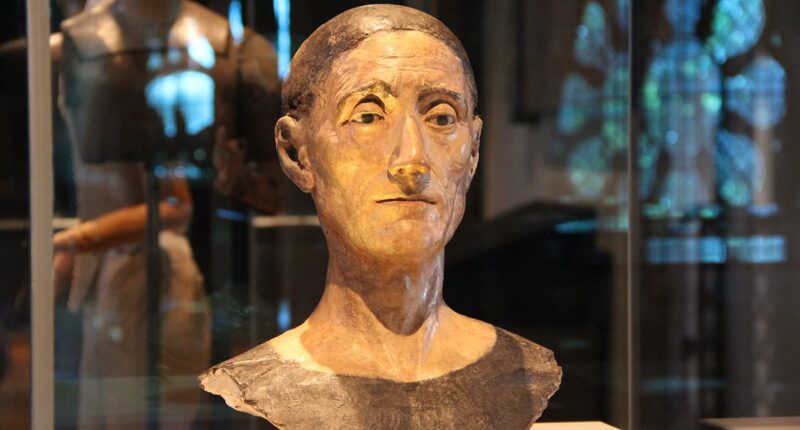He was the first Tudor monarch, the king who vanquished Richard III at the Battle of Bosworth Field.
So when Henry VII died in 1509 after suffering from gout and asthma, he was fittingly buried in Westminster Abbey.
The incredibly realistic head that was placed on Henry’s coffin during his funeral will now undergo scanning by experts to uncover the intricate details of its construction.
It is thought to be the work of Italian Renaissance sculptor Pietro Torrigiano, who came to England after leaving Florence in around 1509-1510.
Previous research in the 1980s concluded that Torrigiano must have used a model of Henry’s death mask to make it so lifelike.
In the past, death masks were commonly created for royals and affluent individuals by molding wax or plaster onto their actual face after their death.
Documents have shown that they were used to create funeral effigies.
The head that is currently under analysis by the digital heritage company ThinkSee 3D is the last remaining part of Henry’s effigy, which was made of wood and straw and was damaged by water in the Second World War.

The funeral effigy head of King Henry VII is being scanned to try to find out how it is so lifelike

Henry VII died in 1509 aged 52, after 24 years on the throne. He defeated Richard III at the Battle of Bosworth
ThinkSee 3D are using a method called photogrammetry to scan the effigy.
The method involves taking multiple photographs around an object and then converting them into a 3D model by looking at surface features and seeing how they change from image to image.
The apparent shift in the position of a feature allows the software, through triangulation, to determine the depth of that feature.
By doing this for hundreds or even thousands of features on an object, it is possible to define an entire surface in 3D.
The photos can then be ‘painted’ back onto the surface to give the digital model a photographic appearance.
It is hoped that the research will establish a firmer link between Henry VII’s death mask and Torrigiano’s work.
The funeral effigy head is one of the most viewed objects in Westminster Abbey’s museum, the Queen Diamond Jubilee Galleries.
Henry’s victory over Richard – whose remains were found beneath a Leicester car park in 2012 – at the Battle of Bosworth ended the Wars of the Roses.

The funeral effigy head is one of the most viewed objects in Westminster Abbey’s museum, the Queen Diamond Jubilee Galleries (above)

The King and Queen were the first monarchs to be buried in the Abbey in a vault under the floor, rather than above ground in a tomb chest. Above: Their tomb effigies at Westminster Abbey

Colorized view of the chapel and tomb of King Henry VII in Westminster Abbey, United Kingdom, 1922
He ushered in the Tudor era that was brutally continued by his son, Henry VIII, before coming to an end with his granddaughter, Queen Elizabeth I, when she died in 1601.
Henry VII’s reign was a prosperous one, meaning there were funds to build the ‘wonder of the world’ Lady Chapel at Westminster Abbey.
It is there that the monarch lies alongside his wife, Elizabeth of York.
They were the first monarchs to be buried in the Abbey in a vault under the floor, rather than above ground in a tomb chest.
Torrigiano designed the tomb effigies that can still be seen above ground. The gilt bronze figures lie atop a marble base.
Henry’s funeral effigy was 6ft 1in tall. Both his and his wife’s were saturated during the Blitz. Elizabeth’s head – along with an arm and hand – also survived.
The nose of Henry’s effigy head was lost centuries ago and then reconstructed during conservation after the war.
The inscriptions for Henry on the tomb read: ‘Here lies Henry the Seventh of that name, formerly King of England, son of Edmund, Earl of Richmond.
‘He was created King on August 22 and immediately afterwards, on October 30, he was crowned at Westminster in the year of Our Lord 1485.
‘He died subsequently on April 21 in the 53rd year of his age. He reigned 23 years eight months, less one day.’
The tomb is also being scanned for the new project.
















